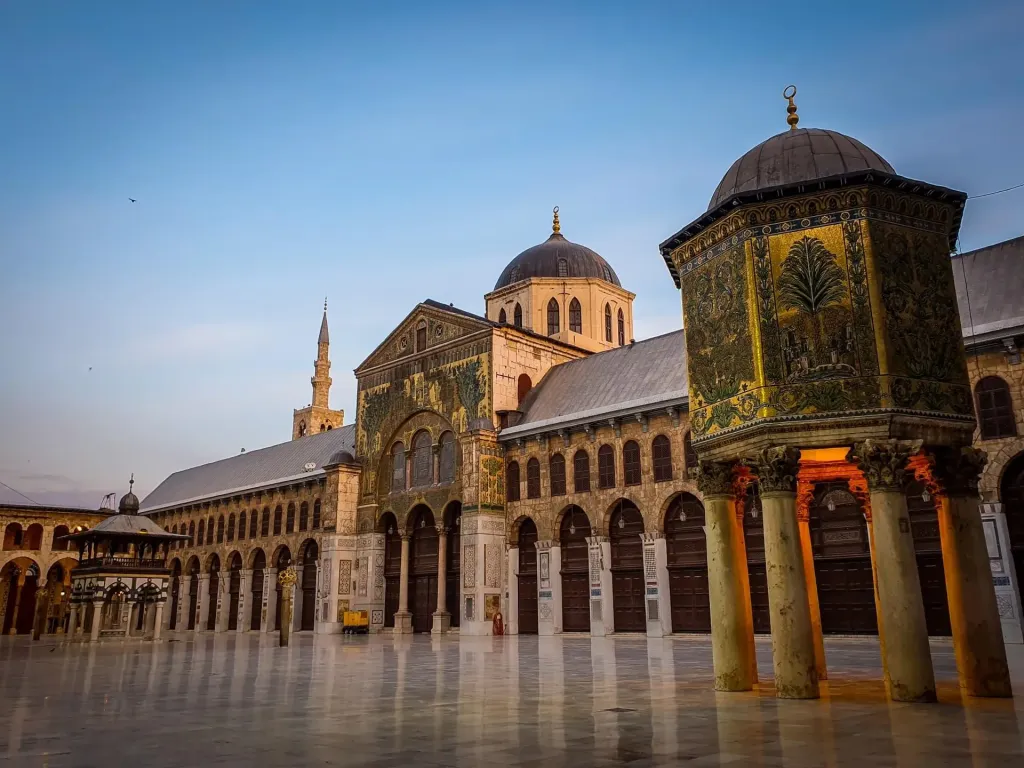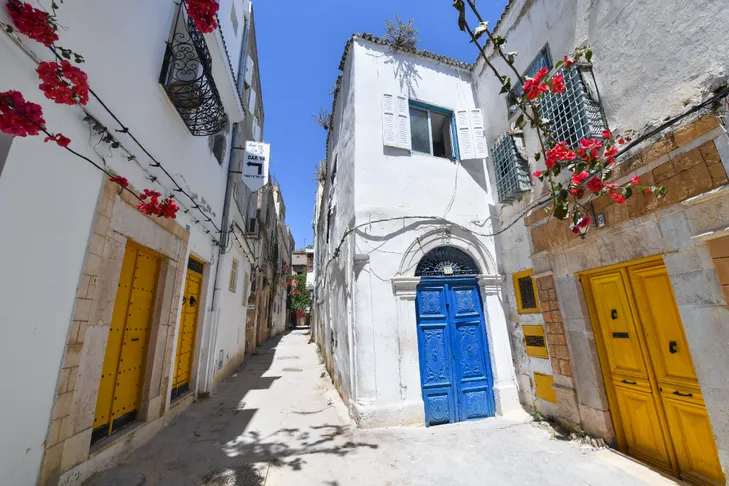Arabic architecture: a journey through historic wonders
- 360°Travel Inspirations
- Feb 15, 2024
- 4 min read
Exploring Arab architecture is like embarking on a captivating journey through time, offering an immersion into historical wonders. From majestic mosques to opulent palaces and impressive forts, these iconic sites stand as testament to a cultural richness unmatched, true gems that connect the past to the present. Let's embark on an exciting journey to discover these Arab architectural treasures.
Mosques : The spiritual jewels of Arabic architecture
Arab mosques are extraordinary examples of architecture, combining magnificence and spirituality. Among them,
The Great Mosque of Cordoba, Spain: Also known as the Mezquita, the Great Mosque of Cordoba is a masterpiece of Islamic architecture in Europe. Built in the 8th century, this mosque is famous for its double-decker arches, marble and jasper columns and splendid dome, a reminder of the influence of Islamic architecture in Europe. After the Christian reconquest, it was converted into a cathedral, creating a fascinating blend of architectural styles. Its cultural importance lies in its role as a spiritual and intellectual center during Andalusia's Islamic Golden Age.
The Blue Mosque, Istanbul, Turkey: The Blue Mosque, or Sultan Ahmed Mosque, is one of the most famous mosques in the world. Built in the early 17th century under the reign of Sultan Ahmed I, it is named for the thousands of blue ceramic tiles that adorn its interior walls. Six majestic minarets surround this imposing structure, while its immense central dome dominates the Istanbul skyline. It is a symbol of the power and grandeur of the Ottoman Empire.
The Al-Azhar Mosque in Cairo, founded in the 10th century, is not only one of the world's oldest universities, but also an architectural masterpiece. Its slender minarets and tranquil courtyards are striking testimonies to Islamic heritage.
Palaces: Testimonies of Royal Grandeur
Arab palaces embody opulence and elegance, reflecting the splendor of past civilizations.
The Alhambra Palace in Granada, Spain, is an architectural splendor, a dazzling example of Nasrid architecture, with its fountain-filled courtyards, detailed mosaics and lush gardens. Geometric patterns and calligraphic inscriptions embellish the walls, and its intricate artistic details bear witness to the refinement of the Moorish period.
Istanbul's Topkapi Palace, home of the Ottoman sultans for centuries, is a true marvel. Its richly decorated halls, ceramic courtyards and priceless collections evoke the opulence and prestige of the Ottoman Empire.
Qasr Al Watan, Abu Dhabi, United Arab Emirates or "Palace of the Nation", is a magnificent palace that embodies contemporary Islamic architecture with its imposing domes, elegant arches and extensive gardens. Qasr Al Watan is not only a government palace, but also a cultural center celebrating the UAE's Arab heritage and rich traditions. Visitors can discover exhibitions on handicrafts, ancient manuscripts and Arab culture.
Forts: Guardians of History
Arab forts, symbols of power and defense, tell stories of battles and military strategies.
Al Jahili Fort, Al Ain, United Arab Emirates: Built in 1891 to defend the city of Al Ain and protect its valuable palm groves, Al Jahili Fort is one of the largest forts in the UAE. It served as a summer residence for the ruling family and a military base. Today, it houses a permanent exhibition on the British explorer Wilfred Thesiger and his travels in the region. The fort is a perfect example of traditional Arab military architecture, with its thick walls and imposing towers.
Bahla Fort, Oman: Bahla Fort, located at the foot of the Jebel Akhdar, is an impressive complex of fortifications listed as a UNESCO World Heritage Site. Built between the 13th and 14th centuries by the Banu Nebhan tribe, this fort is one of the oldest and largest in Oman. Its massive adobe brick walls and watchtowers highlight its strategic importance and role as a center of power. Bahla Fort is surrounded by palm groves and lush gardens, adding to its splendor.
Medinas
The Medina of Fez, Morocco: The Medina of Fez is a living labyrinth of narrow alleys, bustling souks, and historical buildings. Founded in the 9th century, it houses the oldest university in the world, Al Quaraouiyine University. The madrasas, mosques, and palaces of the medina are perfect examples of Arab-Andalusian architecture, with their richly decorated facades and peaceful inner courtyards. The Medina of Fez is a spiritual and cultural center of great importance in Morocco.
The Medina of Tunis, Tunisia: A UNESCO World Heritage Site, the Medina of Tunis is a treasure of Islamic architecture. Its winding alleys host mosques, madrasas, and palaces dating from the 7th to the 19th centuries. The inner courtyards, richly adorned doors, and graceful minarets reflect the diversity of Arab, Andalusian, and Ottoman influences. It is a vibrant center of commerce and culture, preserving Tunisia's historical heritage.
Cultural Importance: Preserving Heritage
These Arab architectural treasures are not merely historical monuments but also living testaments to Arab identity and culture. Their preservation is of paramount importance for passing this heritage to future generations and fostering intercultural understanding.
Indeed, valuing these sites through sustainable tourism and conservation programs not only preserves the remarkable architecture but also boosts the local economy and promotes cultural diversity.
Arab architecture is a celebration of human creativity and meticulous craftsmanship. Each monument tells a story, each detail is a tribute to culture and faith. Traveling through these historical marvels is diving into a world where art and history intertwine to create timeless masterpieces. Whether you are a history buff, an architecture enthusiast, or simply a curious traveler, these jewels of Arab architecture are sure to captivate and inspire you.














































































































































































コメント